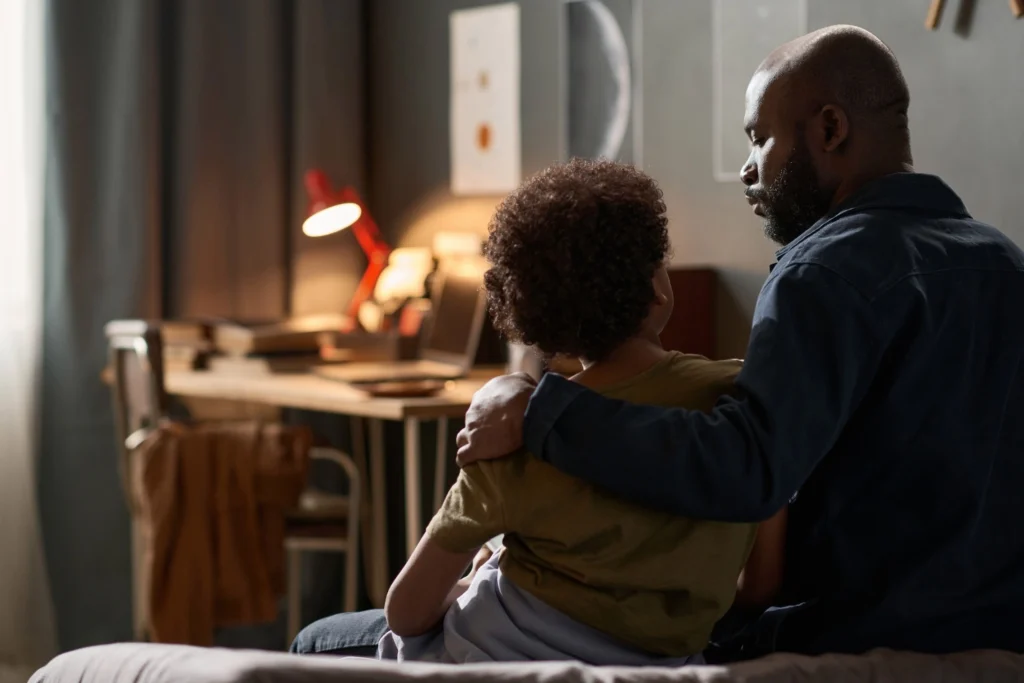The same president who led our nation through a haphazard and treacherous response to COVID-19, while fueling the conditions of racial unrest and police brutality that led to the murder of countless people of color, will likely drag us into four more years of being racialized, criminalized, and colonized. In the third blog of the “Healing Our Healers” series, Dr. Rhonda Tsoi-A-Fatt — our Founder and CEO — shifts her focus from the healers to the young people they serve. She also explains how investing in asset-based healing strategies can help youth of color thrive in a divisive political climate.
For many, the COVID-19 pandemic is far behind us. Mask mandates and restrictions on gatherings were reversed many years ago. We no longer talk about the impact of the global crisis on our mental, physical, and economic well-being. And there is little, if any, empathy for the long-term effects of the pandemic that are still ever-present nearly five years after we all sheltered in our homes. Today, one stark reminder for all of us is the fact that the president who callously handled this pandemic — and indirectly and directly caused so much death and devastation — is now back in office for another four-year term.
I remember our first meeting with Forward Promise grantees in March 2020 to learn what was happening on the ground. Leaders were deeply worried about their youth, whom they could no longer see in person. And many youth-serving organizations couldn’t focus on their normal programming because their staff and people in their communities were anxious about a variety of challenges. Despite the devastation, organizations pivoted to take care of their communities. And I was proud to be a catalyst and advocate who helped shift resources where they were needed, as many philanthropic organizations converted grants to general operating support to provide flexibility and some foundations coordinated efforts to fund rapid-response assistance to tackle real needs in real time.
It is clear that many of the issues we wrote about in The Two Pandemics: Forward Promise Fights Racism in the COVID-19 — including economic anxiety, entrenched learning gaps, and mental health challenges — are still affecting youth of color. Yet the profound inequities that were exposed throughout the crisis, and disproportionately and negatively impacted people of color, were actually issues plaguing communities of color prior to COVID-19. The pandemic just shone a light on the inequities. And the reality is that, because we have returned to the status quo, these problems are still exacting a toll on many youth and their families today.
The new leader of the United States plans to continue his greedy tyranny, aimed at people of color and those from low-income backgrounds. We have already lived through the harm he caused prior. So, we must be ready to take care of ourselves and our communities to mitigate the harm that is certain to come. To address this issue, we need to do two things: invest in healing and advocate against divisive policies that inflict harm on our communities. And one critical component to doing this well is partnering with local organizations, rooted in communities, that are led by people of color who are closest to the issues.
Investing in healing
According to a study by the National Institute of Mental Health, many teenagers of all races/ethnicities have deeply impaired mental health and maladaptive brain development due to their experiences during the pandemic. This means their brains are forever changed — impacting their ability to navigate life, set goals and achieve them, and shift smoothly into adulthood.
Results from a longitudinal study comparing the psychological and biological differences between teenagers before the pandemic, and their peers who lived through the crisis, are alarming. Participants reportedly had challenges executing mental processes, such as self-control and planning. Their ability to regulate their responses to stress and fear, and access memories, was affected. And researchers noted that their brains’ “neuroanatomical features” were more typical of people who were older, or who had endured chronic stress or adversity as children.
To respond effectively to this phenomenon, it is imperative that we invest in culturally responsive healing practices (CRHP) over the next four years of Trump’s presidency. Based on our extensive work with nonprofit organizations, we know that healing practices grounded in culture can help reverse the impacts of the pandemic on brain development.
Many organizations led by people of color are integrating cultural rituals, traditions, activities, and ancestral language into their youth programming. Hallmarks of these programs include intergenerational storytelling, healing circles, access to a network of caring adults focused on intergenerational connectedness, and CRHP practices that promote holistic wellness. Ensuring access to unrestricted funding vehicles offers the most flexibility and the best opportunity to create these programs.
Advocating against divisive policies
It is also crucial that we continue to acknowledge how public systems and institutions implement policies and practices that continually dehumanize people of color, and strongly advocate for the dismantling of these racist systems. Leaders of color are most familiar with the needs of youth of color, so we must follow their lead in fighting against the divisive policies the Trump administration will try to entrench or enact.
News reports about Trump’s education policies indicate he plans to eliminate diversity and DEI initiatives, abolish the U.S. Department of Education in favor of expanding private school choice, strip protections for LGBTQ+ students, and empower groups to ban books on gender identity or race in public schools. He’s also considering revoking birthright citizenship among the children of undocumented immigrants and slashing funding for food aid for summer meal programs, the Children’s Health Insurance Program which supports 37 million children, and the Supplemental Nutrition Assistance Program which provides food stamps. As far as the criminal legal system, expanding the death penalty, militarizing the police, empowering authoritarian and violent law enforcement, and rolling back police reforms are also at the top of Trump’s list in his effort to restore “law and order.”
The common thread among all of these policy ideas is that they will make it more difficult to ensure youth of color thrive. If implemented, our young people will continue to be racialized, criminalized, and colonized. And this cannot happen — not on our watch.
As advocates and practitioners who work closely with POC-led organizations and the young people they serve, we have all witnessed the pain and sorrow our young people endured during the first Trump administration. As we brace ourselves for another four years, we must do all we can to promote and invest in asset-based healing strategies that focus on their individual and collective healing and protect their humanity — no matter who occupies the Oval Office.




